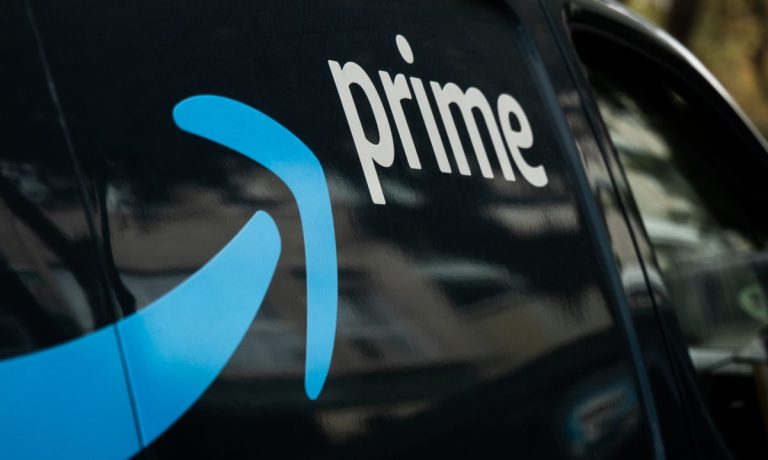
After closing the books on a better-than-expected fourth quarter but a harder-than-expected year, Amazon CEO Andy Jassy stressed that more work needed to be done in order to restore the brand to its pre-pandemic cost structure.
“I think probably the number one priority that I spend time with the team on is reducing our cost to serve customers in our operations network,” the hand-picked successor to founder Jeff Bezos told investors during a rare appearance on the company’s earnings call.
Now 18 months into his tenure, Jassy reminded analysts that the company had not only taken a fulfillment center footprint that was built over 25 years and doubled it but had also — simultaneously — built out a transportation network for last-mile delivery that is roughly the size of UPS, in just a couple years.
“So, when you do both of those things to meet this huge surge in demand, just to get those functional, it took everything we had,” Jassy said, before admitting there’s still a lot more to figure out in order to optimize operations and make the world’s dominant digital retail marketplace even more efficient and productive.
Jassy’s comments came as the company’s Q4 earnings results for the three months ended Dec. 31 saw the world’s largest eCommerce retailer turn a $33 billion profit in 2021 into a $2.7 billion full year loss for 2022 — the first money-losing year since 2014.
This, despite posting a better than expected 9% increase in revenue for both the fourth quarter and the full year totaling $149 billion and $514 billion respectively.
While a 30% pop in its stock in January has pushed Amazon’s market valuation back above the psychological $1 trillion level again, the retail giant’s shares are still down nearly 40% from their November 2021 peak. At the same time, despite this short-term momentum, much of the recent news coverage has focused on its 18,000 recent job cuts as well as a mix of labor issues, costly write-offs and expensive investments.
If cost cuts are set to be Job 1 for the foreseeable future, with Jassy predicting this phase will continue at least through 2023, then Job 2 will be to double down on Amazon’s “maniacally focused” investments into a customer-centric experience that has earned it close to a 50% share of the domestic eCommerce market.
“We exist to make customers’ lives better and easier every day and to relentlessly invent to do so,” he said on the call, before singling out one particular area of focus.
“I think the second priority I would talk about is just speed,” Jassy said. “We believe that continuing to get products to customers faster makes customers happier, and they also convert at a higher rate when they can see promises of deliveries that are faster.”
While speed is clearly an important factor in the customer retail decisioning process, Jassy stressed that it was not the only consideration, and pointed to price, selection and product availability as other core factors.
Although Amazon’s current slice of the food and beverage category is less than one-sixth the size of what segment leader Walmart generates from groceries, the retailer is undaunted and fully committed to growing this misunderstood but traffic-driving corner of the retail industry.
“We continue to believe grocery is a significant opportunity for us, and we’re focused on serving customers through multiple channels, whether that’s online delivery pickup or in-store shopping,” Amazon CFO Brian Olsavsky said on the call.
Going a step further, Jassy said the company was continuing to perfect its ‘mass physical store’ model through a few dozen Amazon Fresh locations, but was committed to conducting further experimentation to find a format that it thinks resonates with customers, is differentiated in some meaningful fashion, and where it also likes the economics.
“We’ve decided over the last year or so that we’re not going to expand the physical Fresh stores until we have that equation, with differentiation and economic value that we like,” Jassy said, “but we’re optimistic that we’re going to find that in 2023.”
As much as the quarter and year have been marked by high profile cutbacks, Amazon has also posted a series of major growth milestones amid the present hyper-inflationary, belt-tightening economy.
Specifically, its efforts to expand its Prime membership, especially via its growing media projects, delivered a string of historic firsts, including the first season of “The Lord of the Rings,” which was watched by over 100 million viewers and drove Prime sign-ups worldwide, as well as the inaugural season of “Thursday Night Football,” which delivered 11% audience growth among hard-to-reach 18- to 34-year-olds.
“Prime membership continues to be a great value for our customers, and improving our Prime benefits is a continuous part of our investment strategy,” Olsavsky said. “Along with competitive pricing, broad selection and faster delivery speeds, we’ve seen Prime members respond to our expanding entertainment offerings.”